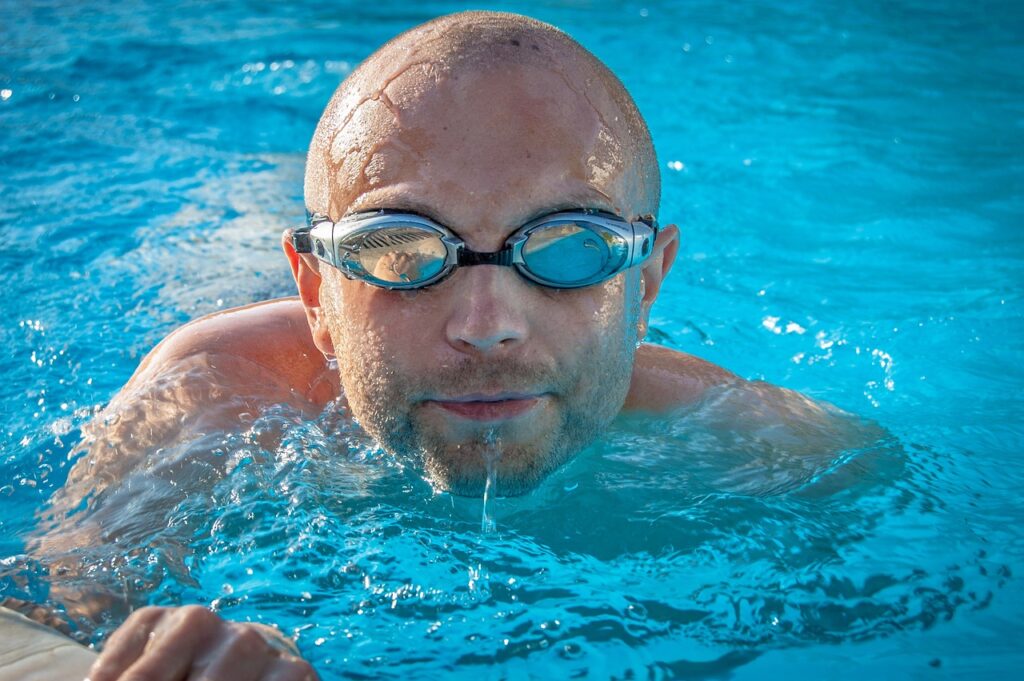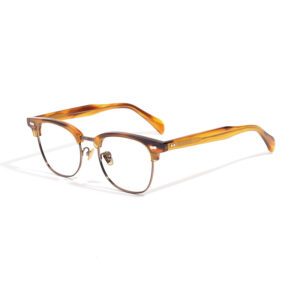Are you confused about why acetate frames from different eyewear brands feel so different, even though they all claim to be made from high-quality acetate? Have you ever wondered why some glasses are more durable, vibrant, or comfortable than others?
The eyewear market is flooded with acetate frames, but not all acetate is created equal. You might spend a lot on a pair of glasses, only to find that they lack the durability or aesthetic appeal you expected. This can be frustrating, especially if you’re a brand owner or buyer looking for consistent quality.
Understanding the differences in acetate materials from various countries can help you make informed decisions. This article will compare acetate materials produced in Italy, Japan, and China, highlighting how their thickness, quality, durability, and aesthetics differ. By the end of this guide, you’ll have a clear understanding of how these differences impact eyewear brands and consumer choices.
Why Is Acetate So Important in Eyewear?

Before diving into country-specific comparisons, let’s briefly discuss why acetate is a preferred material for eyewear.
- Flexibility and Durability: Acetate is known for being both flexible and durable, making it ideal for frames that need to withstand daily wear and tear.
- Rich Colors and Patterns: Unlike plastic, acetate can hold rich colors and intricate patterns, giving eyewear a unique and vibrant appearance.
- Comfort: Acetate frames are lightweight and hypoallergenic, ensuring they’re comfortable for long-term wear.
The quality of acetate used significantly affects the frame’s overall appearance, durability, and comfort. This is why the origin of the acetate material matters so much, as different countries have developed unique methods for producing high-quality acetate sheets.
-

Bulk Buy Acetate Eyeglasses – Vintage 9631
$99.00 Select options This product has multiple variants. The options may be chosen on the product page -

Bulk Wholesale Acetate Eyeglasses – Vintage 529
$99.00 Select options This product has multiple variants. The options may be chosen on the product page -

Buy Acetate Eyeglasses In Bulk – Vintage 9543
$99.00 Select options This product has multiple variants. The options may be chosen on the product page -

Wholesale Acetate Eyeglasses Distributor – Vintage 9632
$99.00 Select options This product has multiple variants. The options may be chosen on the product page
Featured Snippet Section: What Are the Differences in Acetate Quality from Italy, Japan, and China?
Italy, Japan, and China each have distinct approaches to producing acetate for eyewear. Italian acetate, especially from Mazzucchelli, is renowned for its luxurious feel, rich colors, and consistent quality. Japanese acetate is highly regarded for its durability, precision, and resistance to deformation, while Chinese acetate has evolved to offer a wide range of choices with excellent cost-effectiveness, making it popular for brands targeting different market segments.
The Acetate Materials in Detail: Italy, Japan, and China
1) Italian Acetate: The Epitome of Luxury
- Quality and Thickness Characteristics: Italian acetate, particularly from the renowned manufacturer Mazzucchelli 1849, is considered the gold standard in the eyewear industry. These acetate sheets are known for their high density, consistent thickness (typically between 3mm and 8mm), and luxurious texture. The thickness is uniform, ensuring a perfect balance between durability and comfort.
- Color Variety and Patterns: Italian acetate offers a wide range of vibrant colors and unique patterns, thanks to advanced dyeing techniques. The color penetrates deep into the material, ensuring it doesn’t fade over time.
- Brands Using Italian Acetate: Premium eyewear brands like Persol, Prada, and Ray-Ban frequently use Italian acetate to maintain their reputation for quality.

Example: According to a report from Eyewear Market Insight【Eyewear Market Insight, 2021*, Mazzucchelli acetate accounts for approximately 60% of the high-end eyewear market due to its exceptional transparency and smooth finish, which adds a touch of luxury to any eyewear design.
Pros of Italian Acetate:
- Consistent and high-quality finish
- Durable and resistant to wear
- Exceptional color vibrancy
Cons:
- Higher cost compared to other acetate materials
- Longer production time due to its meticulous manufacturing process
2) Japanese Acetate: Precision and Durability
- Quality and Thickness Characteristics: Japanese acetate is known for its exceptional durability and elasticity. Japanese manufacturers are meticulous about the uniformity of their acetate sheets, which usually range from 3mm to 6mm in thickness. This uniformity ensures that frames remain lightweight yet sturdy, ideal for daily wear.
- Production Techniques: Japan’s eyewear industry is famous for its advanced production techniques, combining traditional craftsmanship with modern technology. This results in acetate sheets with high resistance to warping, making them perfect for frames that need to withstand temperature changes and daily handling.
- Brands Using Japanese Acetate: High-end Japanese eyewear brands like Masunaga, Kaneko, and Jins, as well as some international brands, prefer Japanese acetate for its strength and precision.

Example: The Japan Optometric Association’s 2020 Survey【Japan Optometric Association, 2020】reported that 80% of eyewear consumers who wore Japanese acetate frames found them to retain their shape and resist warping after 5 years of regular use, showcasing the durability and precision of Japanese materials.
Pros of Japanese Acetate:
- Highly durable and resistant to deformation
- Consistent quality and precision
- Comfortable for long-term wear
Cons:
- Limited color options compared to Italian acetate
- Typically less vibrant in terms of color patterns
3) Chinese Acetate: Cost-Effectiveness and Versatility
- Quality and Thickness Characteristics: China has made significant strides in acetate production over the past decade. Chinese acetate offers a wide range of thickness options, from 3mm to over 10mm, allowing brands to experiment with different styles and designs. While it may not always match the quality of Italian or Japanese acetate, top Chinese manufacturers have closed the quality gap considerably.
- Advantages of Chinese Acetate: The primary advantage of Chinese acetate is its cost-effectiveness. Brands looking to produce eyewear in large quantities or targeting budget-conscious consumers often choose Chinese acetate. The production process in China is highly efficient, enabling faster turnaround times.
- Brands Using Chinese Acetate: Many independent eyewear brands and mid-range companies, such as Gentle Monster and some fast-fashion brands, opt for Chinese acetate to balance quality with affordability.

Example: The China Eyewear Industry Report 2021【China Eyewear Industry Report, 2021】indicates that Chinese acetate has a 35% market share in the global eyewear industry, with 70% of budget-friendly and mid-range eyewear brands choosing Chinese acetate due to its affordability and versatility.
Pros of Chinese Acetate:
- Highly cost-effective
- Flexible thickness options for various designs
- Rapid production times
Cons:
- Variable quality, depending on the manufacturer
- May not be as durable as Italian or Japanese acetate
How These Differences Impact Eyewear Brands’ Choices
1) High-End Brands’ Preferences
- Quality Over Cost: High-end brands like Cartier, Oliver Peoples, and Tom Ford prioritize quality over cost and are more likely to choose Italian or Japanese acetate. The consistency, durability, and luxurious feel of these materials justify the higher price point.
- Brand Image: Using Italian or Japanese acetate helps these brands maintain their reputation for excellence, craftsmanship, and attention to detail.
2) Independent Designers and Mid-Range Brands
- Balancing Quality and Cost: Independent designers often turn to Chinese acetate for its flexibility in design and affordability. This allows them to create unique, trendy eyewear without the high costs associated with Italian or Japanese acetate.
- Customization: Chinese acetate manufacturers are more willing to accommodate custom orders, enabling independent brands to experiment with different colors, patterns, and thicknesses.
3) Mass-Market and Fast-Fashion Brands
- Cost-Efficiency: Brands that target a mass market or operate within the fast-fashion industry, such as Warby Parker, may lean towards Chinese acetate. This choice allows them to offer a wide range of eyewear options at competitive prices while maintaining reasonable quality.
Receive Custom Guidance
Looking for the perfect custom eyewear to represent your brand?
Reach out to Eyewearbeyond for expert guidance on choosing the best materials, styles, and customizations for your eyewear collection!
How Consumers Can Benefit from Understanding These Differences
For consumers, understanding the differences in acetate materials can help in choosing the right pair of glasses:
- For Durability and Long-Term Wear: Opt for eyewear made from Japanese acetate if you need something that will last and retain its shape over time.
- For a Luxurious Look and Feel: Italian acetate frames offer unmatched color richness, texture, and a high-quality finish.
- For Budget-Friendly Options with Variety: Chinese acetate is ideal for those who want affordable eyewear with diverse design options.
Comparison Table: Italian vs. Japanese vs. Chinese Acetate
| Feature | Italian Acetate | Japanese Acetate | Chinese Acetate |
|---|---|---|---|
| Quality | High | Very High | Varies (Low to Medium-High) |
| Thickness Range | 3mm to 8mm | 3mm to 6mm | 3mm to 10mm+ |
| Durability | Excellent | Exceptional | Good |
| Color Vibrancy | Extremely vibrant | Moderate | Wide variety but less depth |
| Cost | Expensive | Expensive | Affordable |
| Brands Using It | Prada, Ray-Ban, Persol | Masunaga, Kaneko, Jins | Gentle Monster, Various Indies |
Conclusion
The acetate material chosen by eyewear brands has a significant impact on the final product’s quality, durability, and price. Italy, Japan, and China each offer unique strengths in acetate production, catering to different market segments and brand requirements. Italian acetate stands out for its luxury and color depth, Japanese acetate for its precision and durability, and Chinese acetate for its cost-effectiveness and versatility.
By understanding these differences, eyewear brands can make informed choices about which acetate material best aligns with their target market and brand identity. Consumers, too, can use this knowledge to select eyewear that suits their needs in terms of style, comfort, and budget.
Clarify Your Questions
Still have questions about custom eyewear services?
Contact us for expert insights and tailored solutions!
























